Medical billing has never been more complicated than it is in 2025. Between payer-specific rules, stricter timelines, and growing patient expectations, practices must pay close attention to eligibility verification and prior authorization. Otherwise, they risk a storm of denials, delayed payments, and administrative chaos.
According to the American Medical Association, 35% of claims are denied due to authorization or eligibility errors—an alarming statistic that continues to rise. Above all, these two checkpoints can either protect or jeopardize your entire revenue cycle. After all, in today’s billing world, guessing is costly.
“Medical billing without verification is like skydiving without checking your parachute.”
What is Eligibility Verification and Prior Authorization in Medical Billing?
Eligibility verification and prior authorization are crucial pre-billing steps. While eligibility verification confirms that the patient’s insurance is active and what services are covered, prior authorization secures payer approval for certain procedures in advance. Both tasks act as the gatekeepers to claims being accepted, processed, and paid.
Failing to complete either one may result in claims being rejected for “invalid coverage” or “authorization not obtained.” To put it differently, skipping them is like submitting a test without your name on it.
“Skipping prior auth is like trying to sneak past airport security with a shampoo bottle.”
Why Do Claims Get Denied Without Eligibility Verification or Prior Authorization?
Many claim denials can be traced back to poor front-end verification. In other words, the problem starts before the patient even sees the doctor. Whether it’s due to outdated coverage information or missing approvals, the result is always the same: denial.
As a matter of fact, an MGMA Stat poll revealed that 80% of practices saw increased prior auth demands in the last 12 months. That’s not a coincidence—payers are tightening up.
Common reasons for denial include:
Coverage was verified too early and expired by appointment day
Authorization wasn’t obtained or had expired
Diagnosis and CPT codes didn’t match the approved request
Changes in policy were not updated in the billing system
How Do You Verify Patient Eligibility in Medical Billing?
To verify patient eligibility, billing teams must confirm the patient’s active policy status, benefit coverage, copay responsibilities, and out-of-pocket limits. This step can be done through payer websites, EHR-integrated verification tools, or clearinghouse platforms.
To illustrate, many practices use:
Payer portals like UnitedHealthcare, Aetna, or BCBS
Tools like Availity, Experian, or Waystar
EHR systems that trigger real-time eligibility checks
Additionally, best practices in patient eligibility verification suggest checking eligibility at least 48 hours prior to each visit to reduce error rates.
“Asking a patient if they still have coverage is the new ‘Hey, how’s your weekend?’”
When Is Prior Authorization Required for Medical Procedures?
Not all procedures require authorization—but many do. Specifically, high-cost services, imaging, specialty treatments, and outpatient surgeries are typically subject to payer review.
Furthermore, different payers have different rules. If you assume instead of confirming, expect a denial.
Some common services requiring prior authorization include:
CT, MRI, and PET scans
High-cost medications
Out-of-network referrals
Behavioral health services
Elective surgeries
For Medicare and Medicaid, consult CMS guidelines to determine what needs approval and how far in advance to file.
What Are the Best Tools for Eligibility Verification and Prior Authorization?
Manual processes are no match for today’s billing volume. That’s why practices are turning to automation platforms to track, submit, and verify eligibility and authorization in one workflow.
Reliable platforms include:
Availity – for real-time eligibility across major payers
Waystar – combines pre-auth management with denial analytics
Experian Health – for eligibility + cost estimation
ZOLL AR Boost – smart eligibility scrubbing
Integrating these tools with your RCM partner or system improves turnaround time and reduces human error.
How Long Does Prior Authorization Take?

Timelines vary depending on service type, payer, and submission method. For example, ePA platforms return faster results, but manual submissions could delay care.
Typical durations include:
Basic imaging: 24–48 hours
Specialty prescriptions: 3–5 business days
Complex surgeries: up to 10–14 business days
That said, delays occur when documentation is incomplete, CPT codes don’t align, or faxed forms go missing. Sooner or later, these mistakes snowball into claim rejections.
“Waiting for prior auth is like watching paint dry—on a rainy day.”
What Are the Common Errors in Eligibility Verification and Prior Authorization?
Even seasoned billing teams slip up. Whether it’s outdated payer rules or rushing through data entry, small mistakes lead to big denials.
These are the most common blunders:
Verifying eligibility too early (then forgetting to recheck)
Submitting after the service was performed
Using incorrect CPT codes
Failing to upload documentation
Ignoring payer updates
Following eligibility and benefits verification best practices helps you build guardrails around these mistakes.
How Can You Speed Up Prior Authorization Requests?
Speed is a game-changer in prior authorization. After all, delays can result in rescheduled appointments, frustrated patients, and denied claims.
Here’s how to improve your speed:
Use ePA portals that auto-fill CPT/DX fields
Preload payer forms and required documents
Maintain a database of payer-specific rules
Track status updates through dashboards
Assign a dedicated pre-auth team or partner
With this in mind, streamlining your submission process reduces phone tag and gets patients scheduled faster.
What’s the Difference Between Eligibility Verification and Prior Authorization?
Both processes involve insurance, but they answer very different questions.
Eligibility verification asks, “Does the patient have valid coverage for this visit?”
Prior authorization asks, “Is the insurer giving approval for this specific treatment?”
In a word:
Eligibility = confirms access
Prior auth = grants permission
| Process | Purpose | When to Perform |
|---|---|---|
| Eligibility Verification | Confirms active coverage & service benefits | 24-48 hours before appointment |
| Prior Authorization | Seeks insurer approval for specific services | Before service is rendered |
“Eligibility tells you if the door is open. Prior auth checks if you’re allowed to walk in with shoes on.”
How Often Should Eligibility Be Verified for Returning Patients?
Always. Even for patients who visit weekly, insurance coverage may change monthly—or overnight.
You should reverify for each encounter because:
Employers switch health plans
COB status changes
Deductibles reset at the start of the year
Policies may lapse without notice
In this case, your front-desk team plays a vital role in preventing costly errors. Integrating real-time verification tools into the check-in process helps catch issues early.
How Do You Handle Retroactive Authorizations or Missed Eligibility Checks?
Retroactive authorizations are only approved in rare cases. Typically, payers accept them for emergencies—but not for provider oversight. Therefore, the best fix is prevention.
To attempt recovery:
File a payer appeal with proof of medical urgency
Document communication records with the payer
Submit medical necessity letters signed by the provider
Yet even with all this, your odds are low. It’s safer to build a workflow where missed verifications are practically impossible.
How Eligibility Verification and Prior Authorization Affect Denial Rates
Let’s talk results. According to the CAQH 2024 Index, 13% of claims are denied, and nearly 1 in 5 of those are linked directly to missing eligibility or authorizations. In other words, getting these two right could boost your first-pass resolution rate dramatically.
Practices that prioritize these steps see:
20–30% fewer denied claims
Quicker reimbursement cycles
Improved patient satisfaction due to fewer reschedules
Reduced manual rework and appeals
All things considered, eligibility and prior auth aren’t optional—they’re a non-negotiable part of clean claim submission.
Conclusion: Why Eligibility Verification and Prior Authorization Must Come First
In the end, eligibility verification and prior authorization are more than checkboxes—they’re the foundation of a functioning billing system. Providers who skip them do so at their own risk. Denials, delays, lost revenue, and angry patients are just a few of the side effects.
With payers introducing more documentation rules and shorter authorization windows, providers must adopt smarter workflows. From automated tools to trained RCM partners, there are reliable ways to make these steps second nature in your billing process.
Don’t treat verification like a formality. Treat it like revenue protection.
Want to Stop Losing Revenue Over Missed Authorizations?
We help U.S. healthcare providers manage eligibility verification and prior authorization using trained teams and smart automation tools.
Real-time checks with all major payers
Pre-auth submission + tracking workflows
Denial prevention systems built around payer-specific logic
👉 See how we help practices like yours submit clean claims and protect their revenue—without adding more work to your staff.


